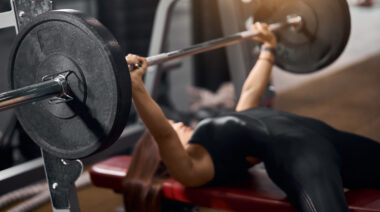Posture Alignment Therapy is a holistic exercise technique that uses gravity and a person’s own body weight to improve alignment and balance, naturally eliminating the underlying causes of pain and physical limitation.
RELATED: How to Unlock Your Athletic Potential Through Good Posture
Posture Alignment Therapy is a holistic exercise technique that uses gravity and a person’s own body weight to improve alignment and balance, naturally eliminating the underlying causes of pain and physical limitation.
RELATED: How to Unlock Your Athletic Potential Through Good Posture
In practice, this therapy looks like a short list of daily movements that don’t take much time at all and make a massive difference in how you feel and perform. So, let’s get right down to business and talk about how this technique can boost your performance in the gym or with your favorite sport.
What Does Postural Alignment Therapy Look Like?
The Posture Alignment Therapy technique is based in the basic principal that the human body is comprised of eight major load-bearing joints: shoulders, hips, knees, and ankles.
These joints function best when horizontally and vertically aligned as shown in the image below:
When these joints are out of alignment, the body is susceptible to joint wear and tear, pain and injury:

The human body was designed to stand on two feet and to be in motion constantly in order to survive. The combination of gravity and movement is not only necessary to maintain the body’s skeletal alignment, but also critical for survival. At least that was the case prior to modern conveniences and technology.
“The problem is simple – we do not move nearly enough to remain pain free and functional.”
Today, we no longer need to move in order to survive. In order to make a living, most of us click a mouse, stand stationary, or perform the same movement patterns over and over. The problem is simple – we do not move nearly enough to remain pain free and functional.
TRY THESE: 6 Yoga Poses for Better Posture
But the solution is also simple: move more! And that’s where Posture Alignment Therapy comes into play. The program involves a customized sequence of simple, low-demand daily stretches and exercises called a menu that are designed to restore function and balance. The menu does not focus on the symptom or the site of pain. Instead, it addresses the underlying alignment issues that are causing the problem.

Walking a client through her menu exercises.
Case Study: Chronic Back Pain
Those who embrace the fact they do not move enough and commit to performing their menu daily – along with making periodic visits to their therapist (in this case, me) to fine tune their menu – are the ones who have the most success. A well-constructed menu will empower clients to keep themselves healthy and pain free without having to rely on “after the fact” treatment of pain and injuries.
LEARN MORE: How to Stop Your Lower Back Pain
“Posture Alignment Therapy and its underlying principals will only benefit you if you put them into practice and make them a part of your daily routine.”
Before beginning Posture Alignment Therapy, Trish (pictured below) had chronic back painthat hindered her training for close to three years. Her max front squat was 165lb and she was not able to progress past that weight due to back pain. Trish’s before photos show that her hips and spine were out of alignment. If you look even closer, you may see that her shoulders, knees, and ankles were also misaligned.

Trish: before therapy
After one month of doing a customized daily menu that addressed her shoulders, hips, knees and ankles, Trish’s alignment greatly improved, as shown by the after photos below. Today, her max front squat weight is up 25lb to 190lb, and she is pain free during weighted squatting movements.

Trish: after therapy
Resources That Get Straight to the Point
Posture Alignment Therapy and its underlying principals will only benefit you if you put them into practice and make them a part of your daily routine. Take action today in one of the following ways:
1. Use the exercises in my instructional videos.Try the exercises and find the ones that make the biggest difference for you. Pay close attention to my cues and instructions – doing these moves correctly will make a huge difference. Incorporate these exercises into your daily routine, preferably in the morning before you begin your day and before you work out (straighten before you strengthen).
2. Get the book Pain Free by Pete Egoscue.This book contains easy-to-follow, actionable sequences of exercises accompanied by photos and instructions. It also includes an easy-to-understand narrative of what causes pain in each part of the body. This book will help you to understand what is causing your problem and how to fix it.
If the do-it-yourself method is not cutting it for you, book an appointment with a therapist in your area. You can also find therapists who will work with you online. A good therapist can help you create a customized menu of exercises based on your alignment and your goals.
Images 1&2 by Pulse Beat Fit.
Photos 3-5 by Maryann Berry.






